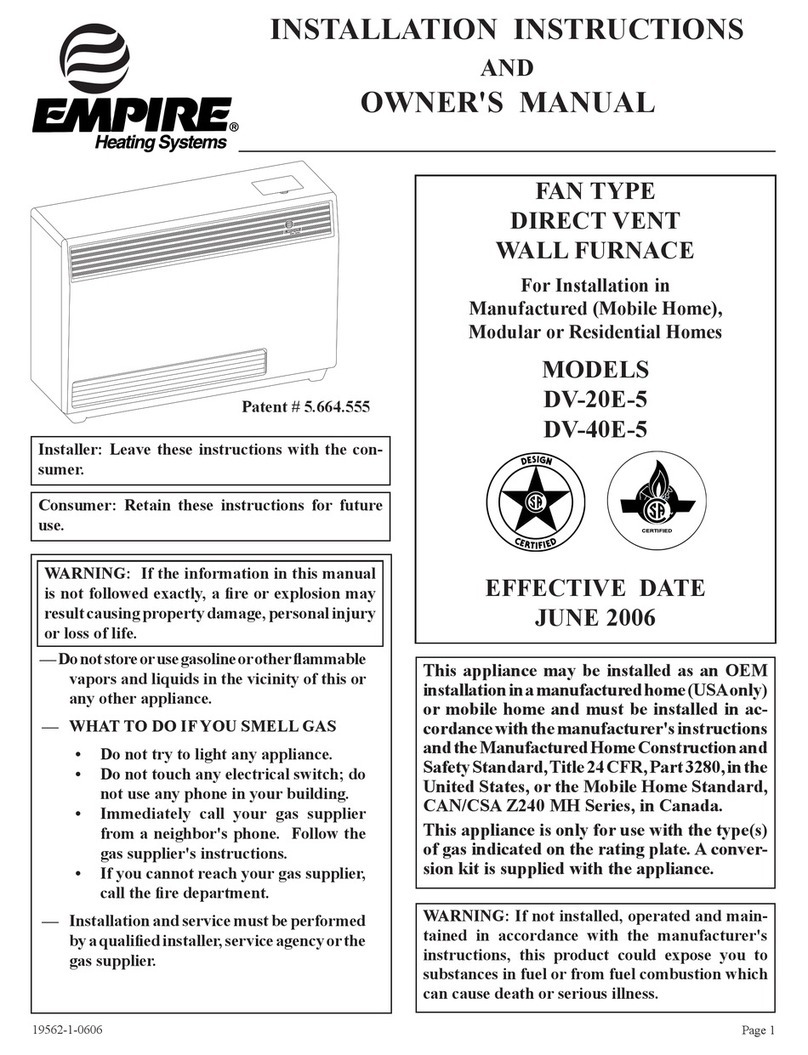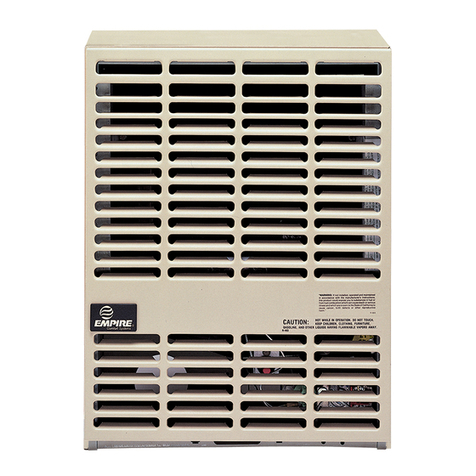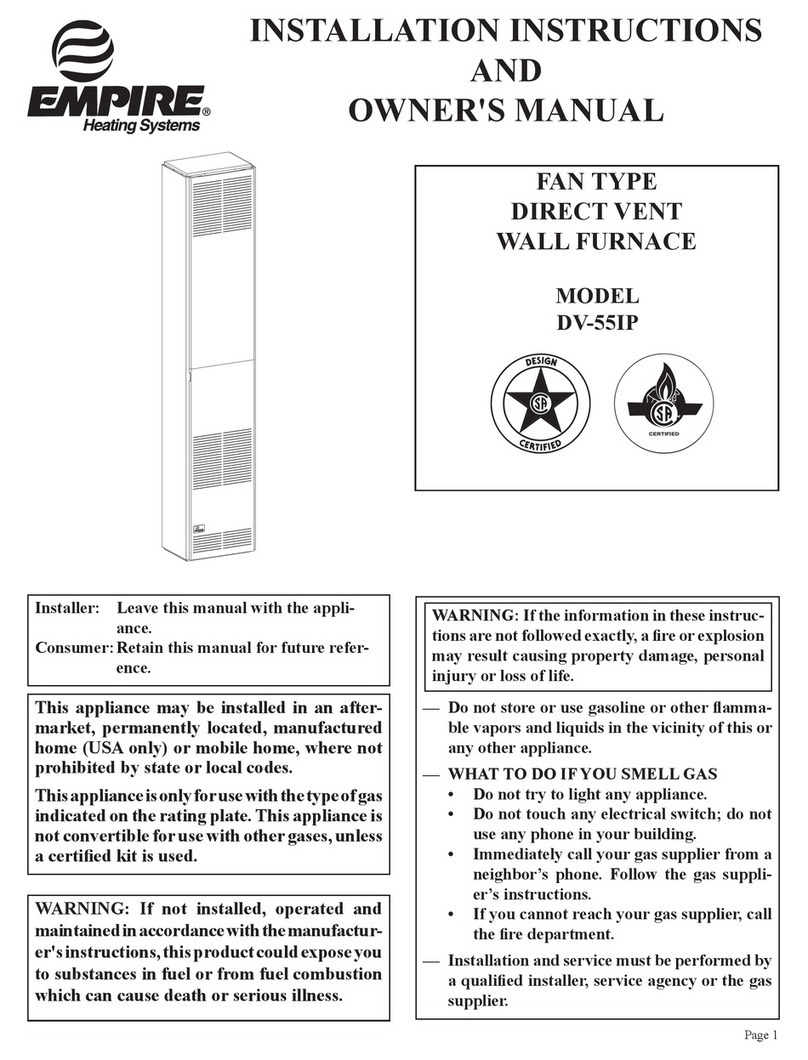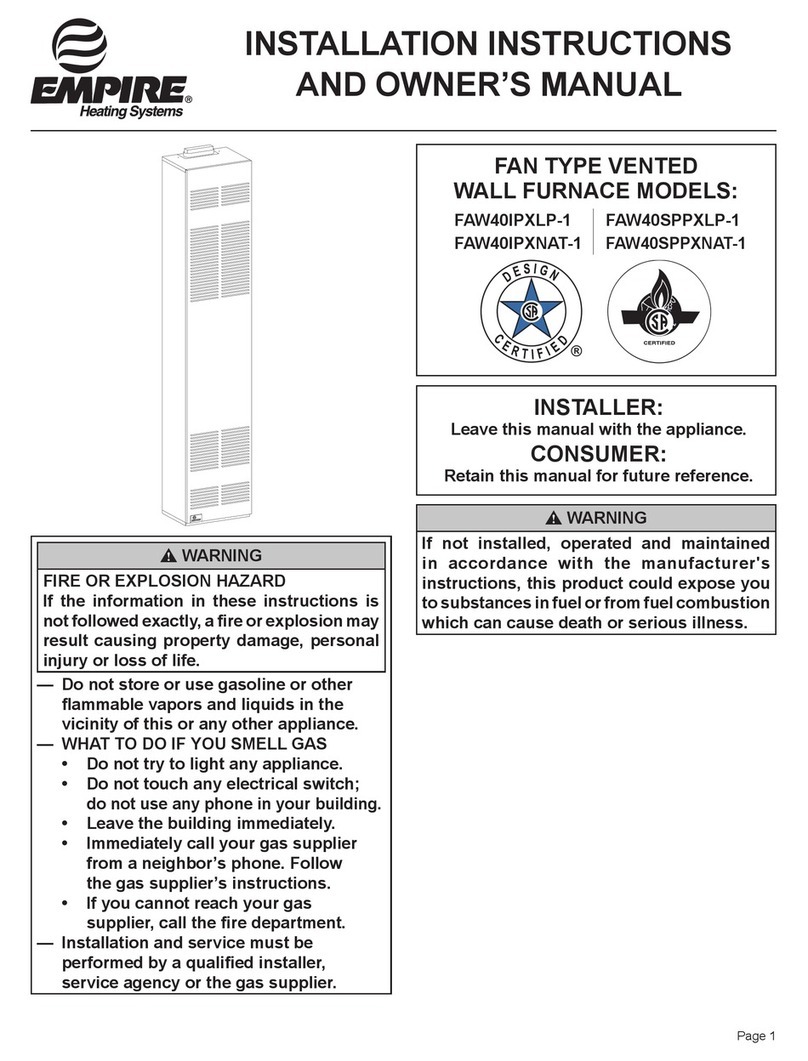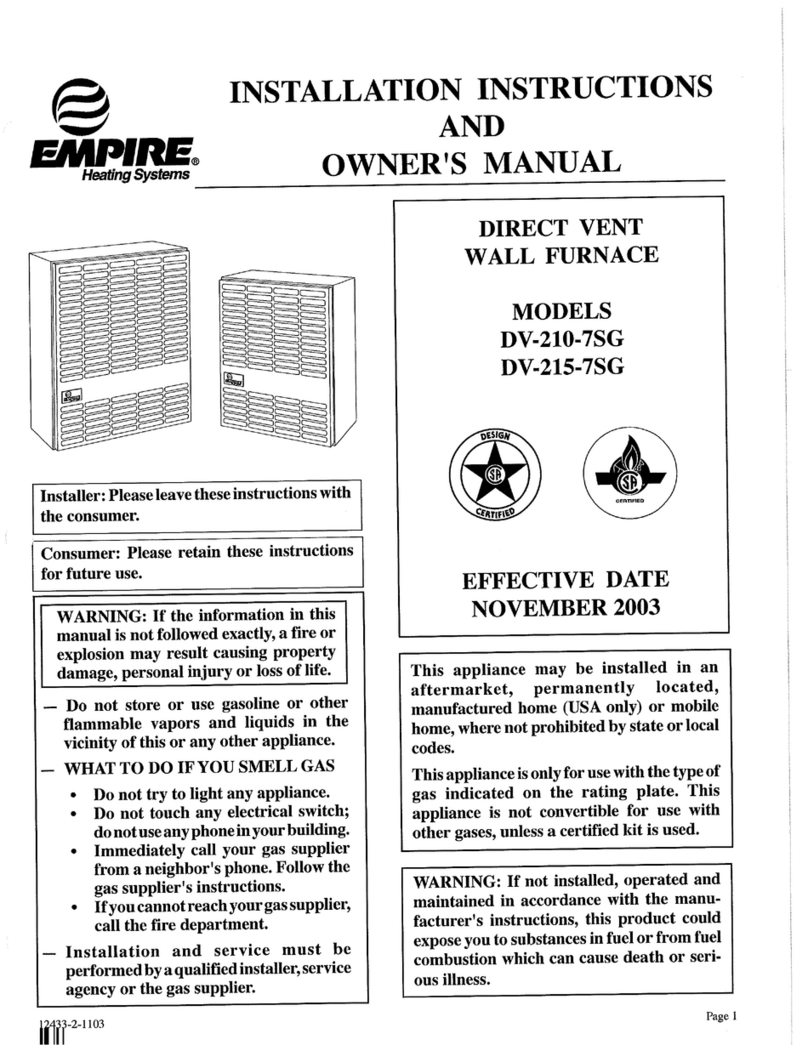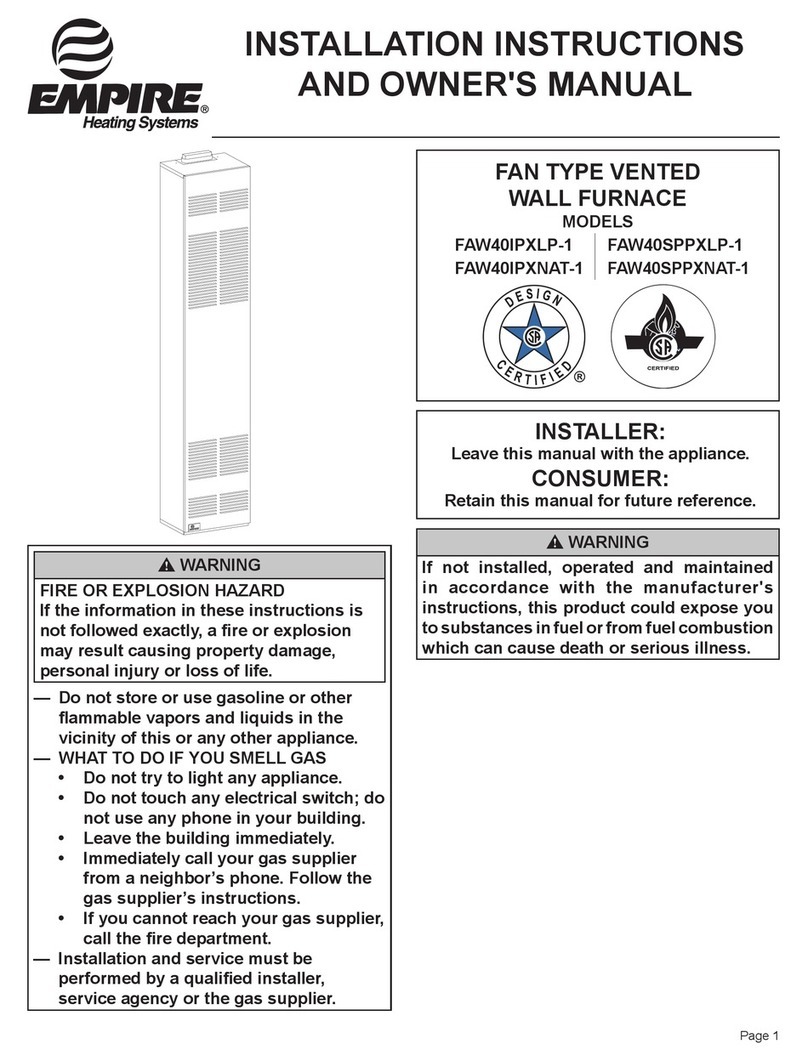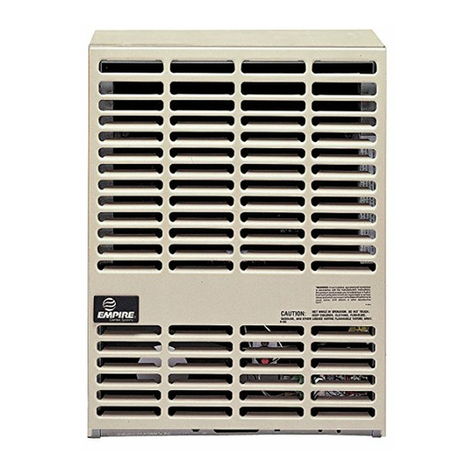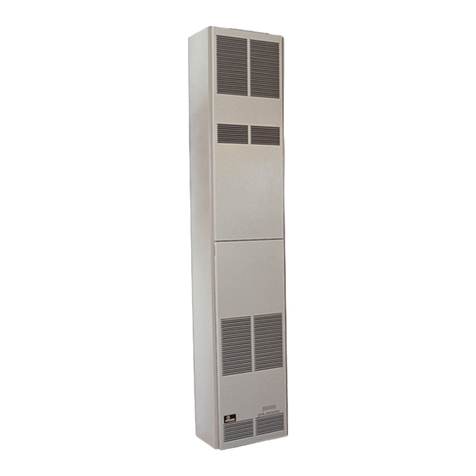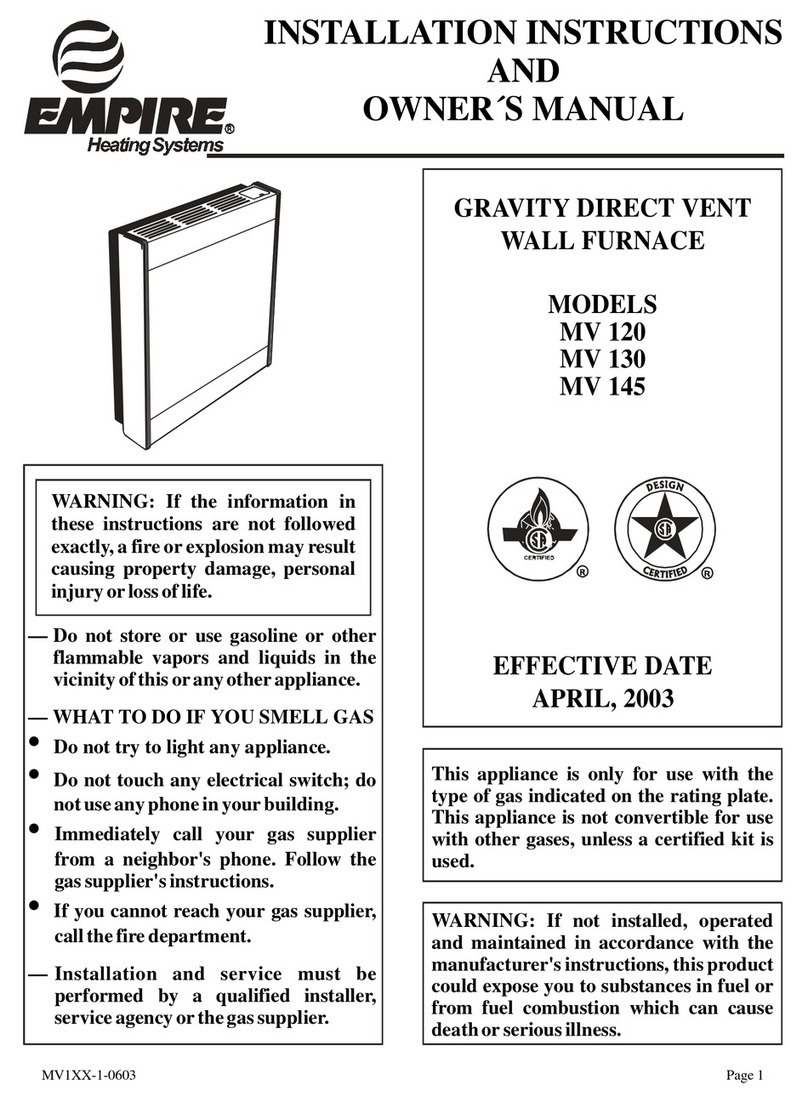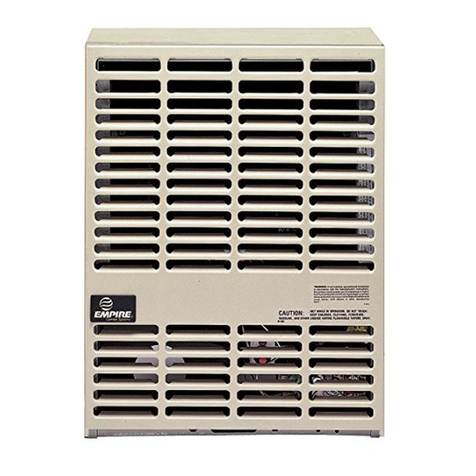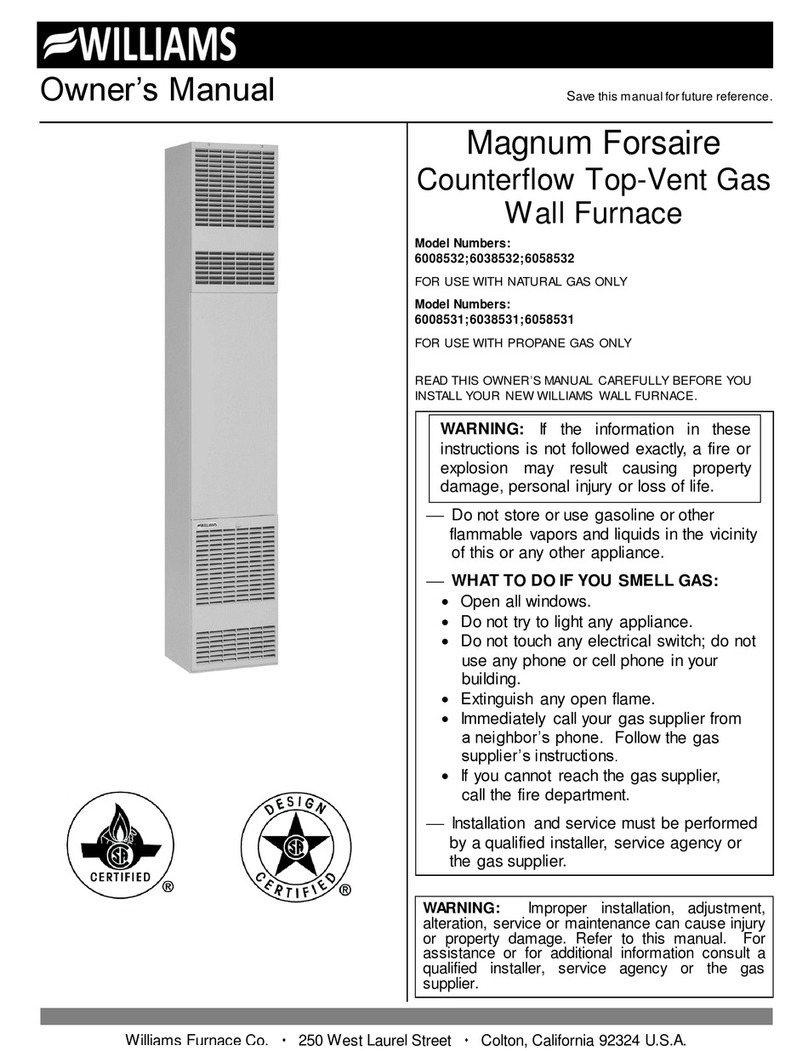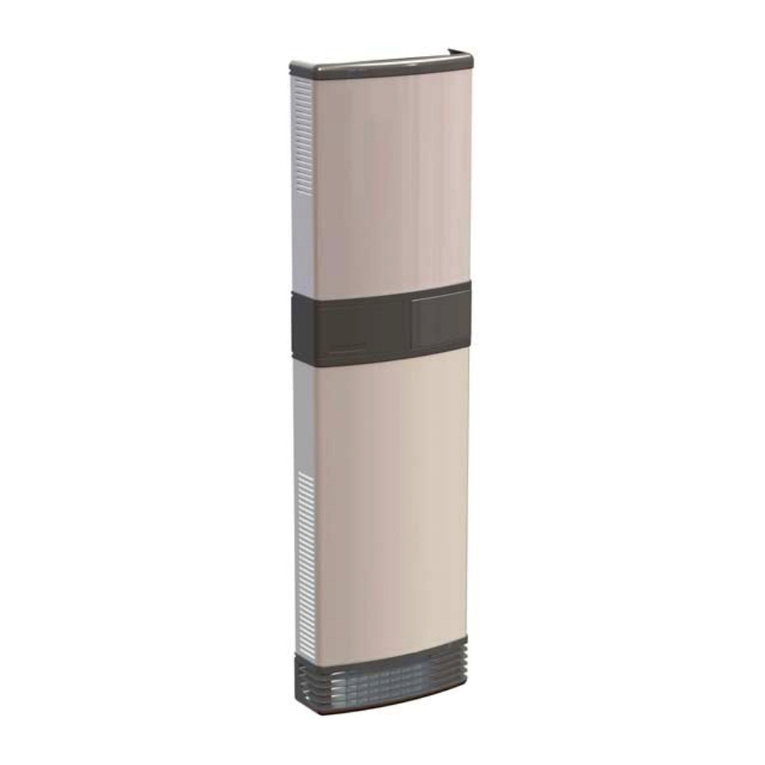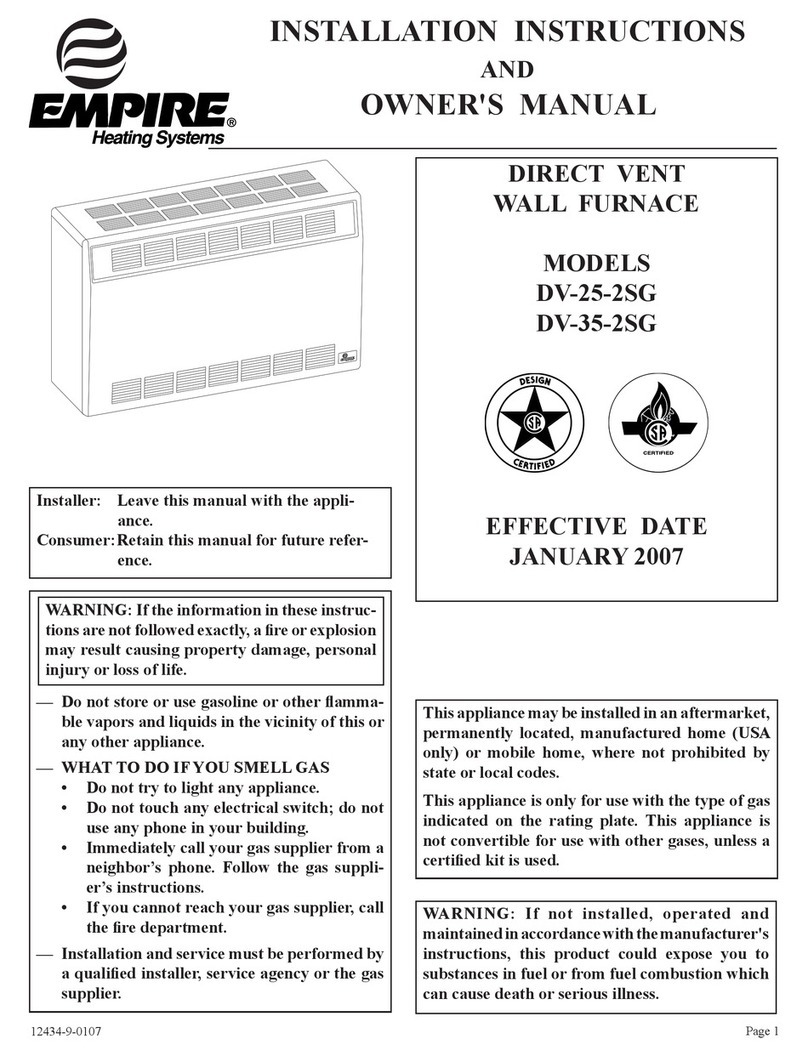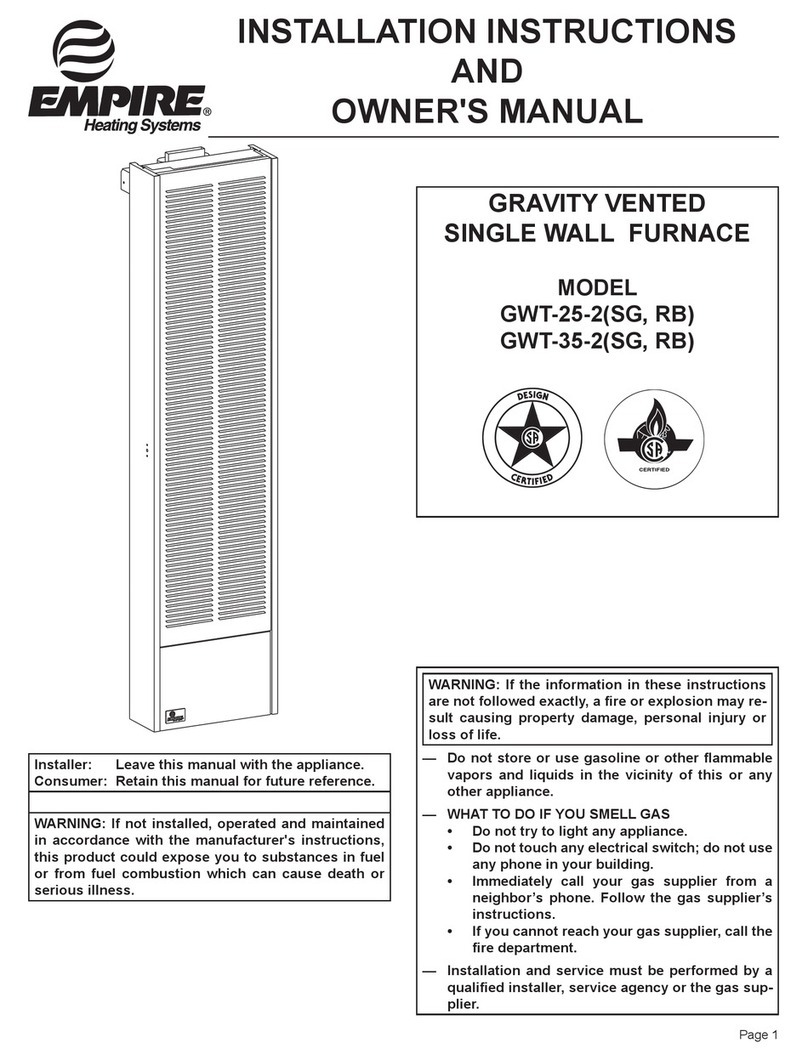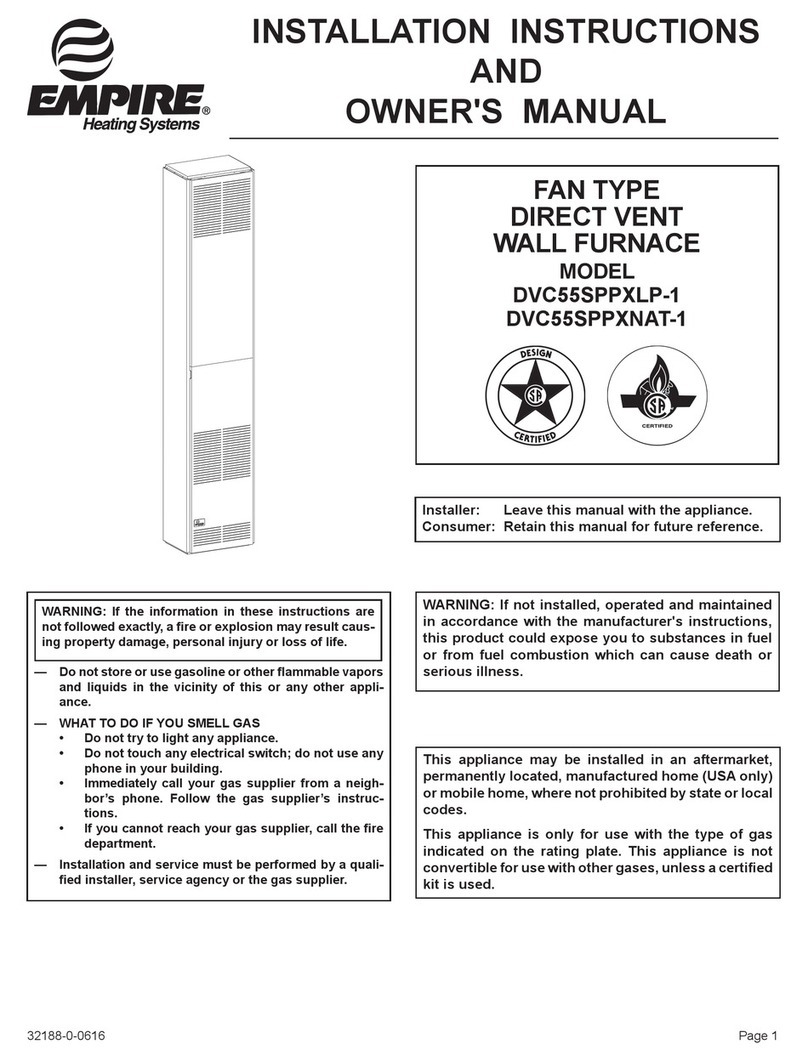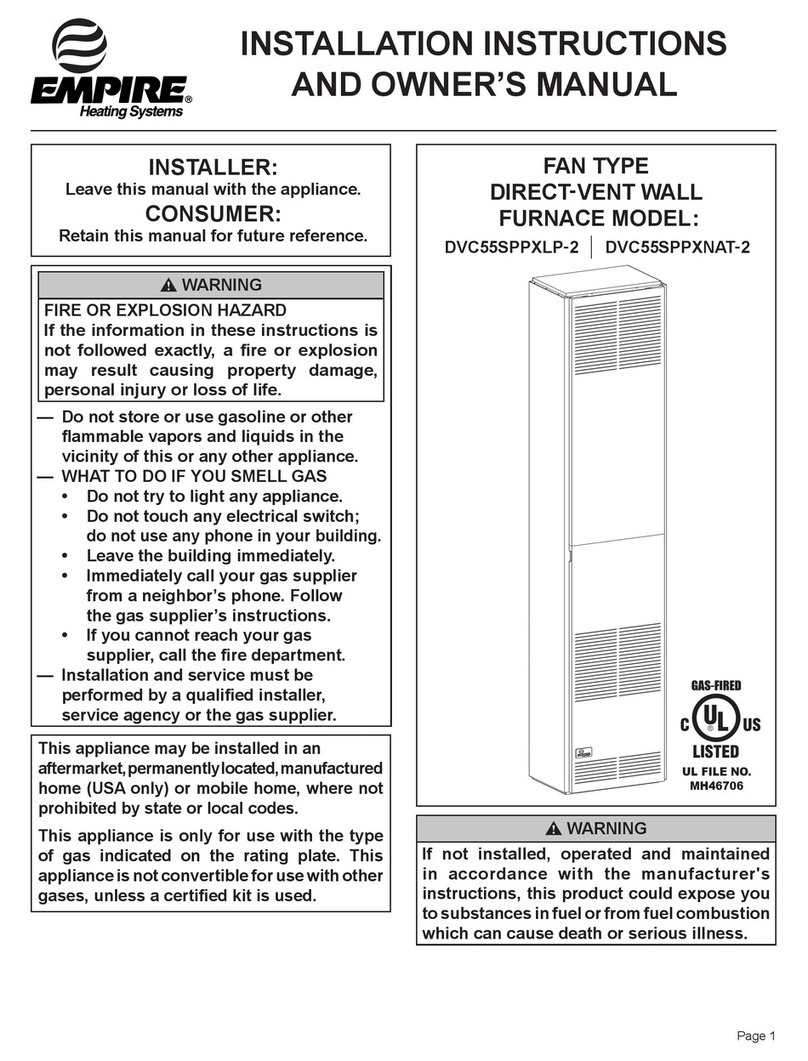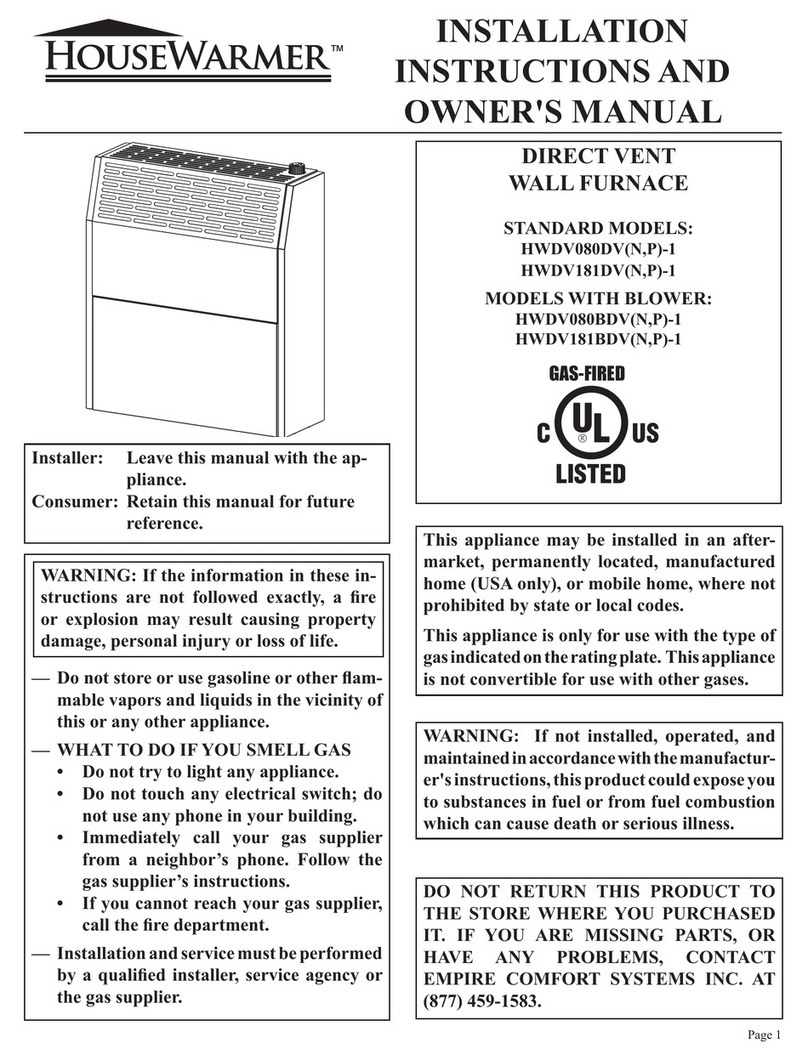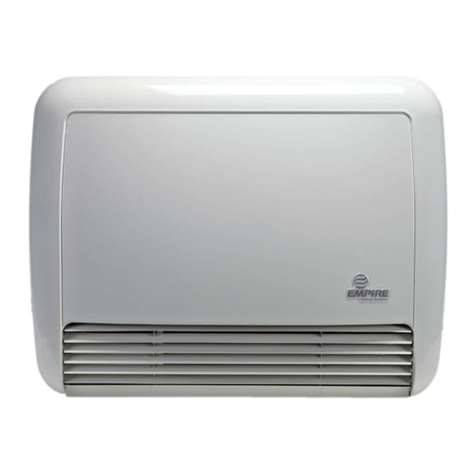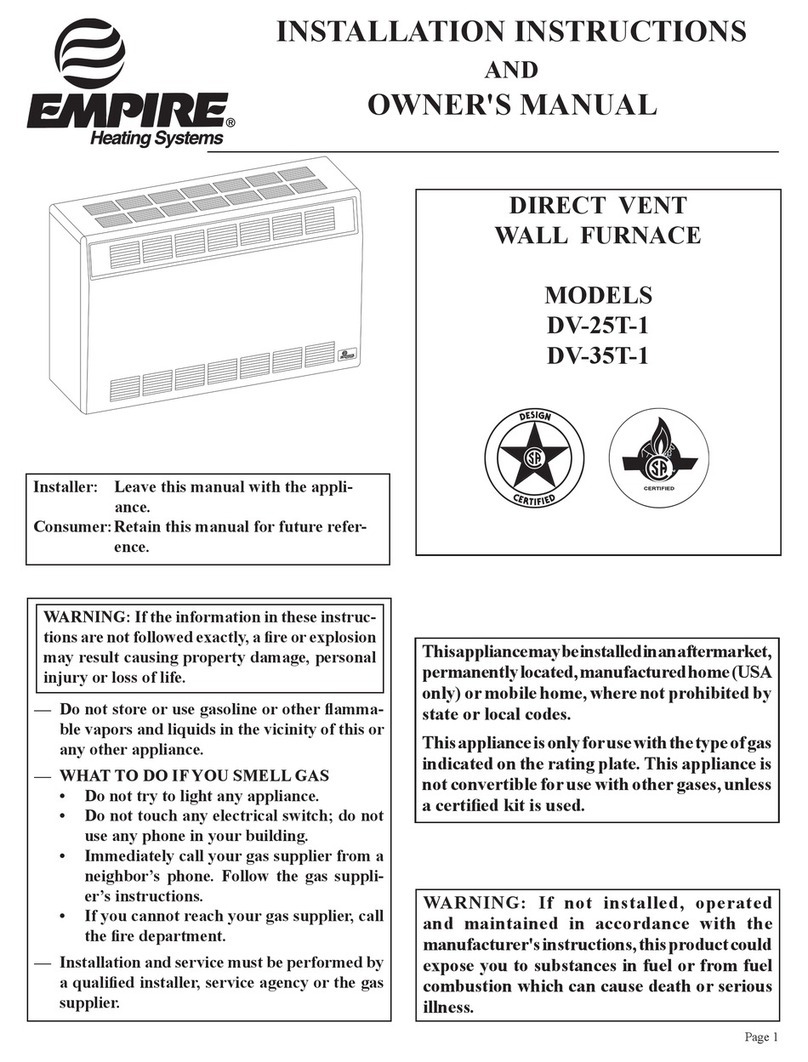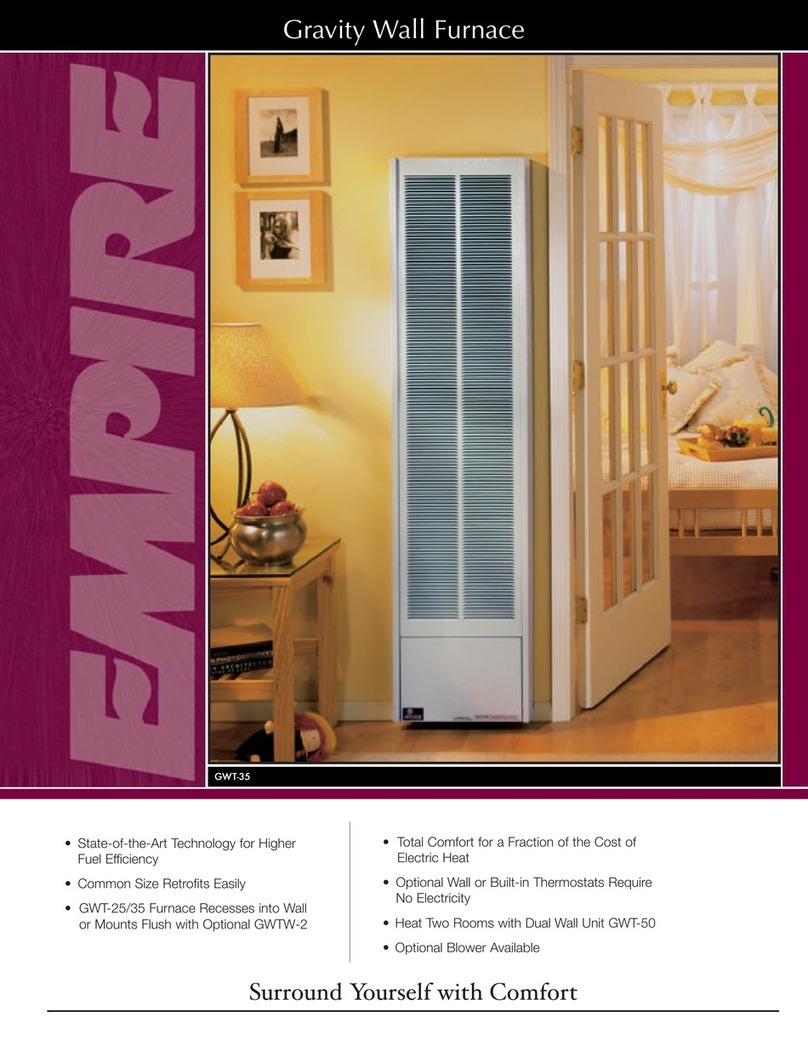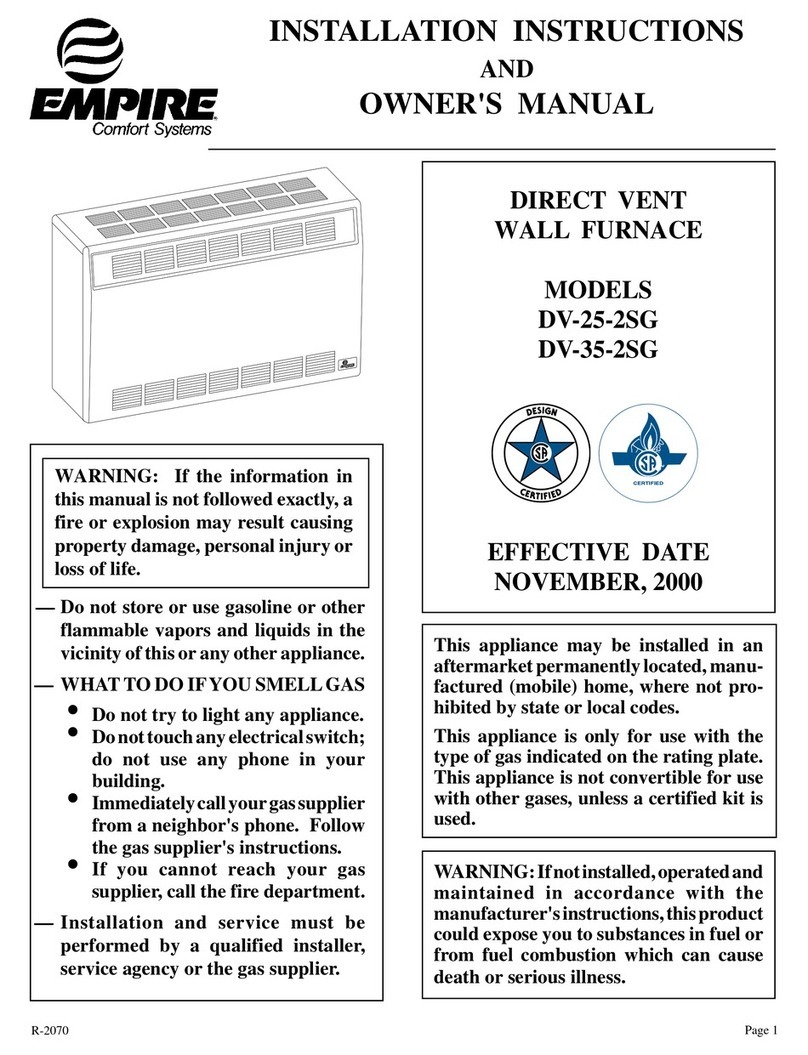
45053-0-0523Page 6
Ventilation and Combustion Air
Wall furnaces shall be installed in a location in which the facilities
for ventilation permit satisfactory combustion of gas and proper
venting under normal conditions. In buildings of conventional frame,
brick,orstoneconstructionwithouttightstormwindowsanddoors,
inltrationisnormallyadequatetoprovideairforcombustionand
draft hood dilution.
Whereappliancesareinstalledinconnedandunconnedspaces
within a building, the building being of unusually tight construction,
air for combustion and ventilation must be obtained directly from
outdoors or from such spaces that freely communicate with the
outdoors. Under these conditions, the conned and unconned
spaces shall be provided with two permanent openings, one near
the top of the enclosure and one near the bottom; each opening
shall have a free area of not less than one square inch (6,45cm2)
per 2,000 BTU hr. (.6KW/H) of total input.
Qualied Installing Agency
Installation and replacement of gas piping, gas utilization equipment
or accessories and repair and servicing of equipment shall be
performedonlybyaqualiedagency.Theterm“qualiedagency”
meansanyindividual,rm,corporationorcompanywhicheitherin
person or througha representative is engaged inand is responsiblefor
(a) the installation or replacement of gas piping or (b) the connection,
installation,repairorservicingofequipment,whoisexperiencedin
suchwork,familiarwithallprecautionsrequiredandhascomplied
with all the requirements of the authority having jurisdiction.
The installation must conform with local codes or, in the absence of
local codes, with the National Fuel Gas Code, ANSI Z223.1/NFPA
54,* Natural Gas and Propane Installation Code, CSA B149.1.
*Available from the American National Standards Institute, Inc., 11
West 42nd St., New York, N.Y. 10036.
Clearances
1. In selecting a location for installation, it is necessary to provide
adequate accessibility clearances for servicing and proper
installation.
2. The FAW-55 can be attached to the wall or recessed into the
wall up to 4 inches (102mm) in depth.
3. The wall in which the furnace is recessed has (0) zero (0mm)
clearance to the furnace sides and top.
4. When using side discharge registers, SOR-1 or SOK-1, the
furnace cannot be recessed into the wall.
5. Clearance to sidewall or combustible material is 4 inches
(102mm).
6. Ceiling clearance is 7-1/2 inches (191mm).
7. Floor and rear wall clearance is (0) zero inches (0mm).
8. Clearance of 18 inches (457mm) is required to adjacent wall or
combustiblematerialwhenushmountedSOR-1,sideoutlet
register is used.
Before Installing Consider The Following Venting
1. A chimney for residential-type or low-heat gas utilization
equipment shall extend at least 3 feet (914mm) above the
highest point where it passes through a roof of a building and
at least 2 feet (610mm) higher than any portion of building
within a horizontal distance of 10 feet (3m).
2. Thisfurnacemustnotbeconnectedtoachimneyueserving
a separate solid-fuel burning appliance.
3. Uninsulated Single-Wall Metal Pipe shall not be used
outdoors in cold climates for venting gas utilization
equipment.
INSTALLATION
4. Attention! This Fan Type Vented Wall Furnace is equipped with
aventsafetyswitch.Intheeventofspillageofueproducts
due to improper venting the vent safety switch will open, which
results in the main burners to “shut off”.
Refer to Figure 1 and page 17 for additional information regarding
U.L. Listed gas vent equipment.
Installing Optional Side Outlets
Side outlet register, SOR-1 may be installed on one or both sides
of the furnace at the required clearances of 18 inches (457mm) to
adjacent wall or combustible material as shown in Figure 2.
1. Locate and cut the 5-1/2” (140mm) square opening inthe cabinet
sideusingthetemplatefromthekit,exposingtheinnerliner
knock-out.
2. Removetheknock-out.
3. Place the register on the 5-1/2” (140mm) opening with the
louversset for the desireddirectionandmarkthe mounting
holes using the register as a template.
4. Drill (2) 1/8” (3mm) diameter holes in cabinet side and fasten
theregisterinplacewith(2)#10x1”(25mm)screwsprovided.
Sideoutletkit,10”(254mm)bootassemblywithregister,SOK-1
for warm air discharge into an adjoining room may be installed on
either side of the furnace at the required clearance of 4 inches to
adjacent wall as shown in Figure 3A.
1. Locate and cut the 5-1/2” (140mm) square opening inthe cabinet
sideusingthetemplatefromthekit,exposingtheinnerliner
knock-out.
2. Removetheknock-out.
3. Usingtheinnerandouterbootsasholetemplates,markand
drill (8) 1/8” (3mm) diameter holes in the inner liner and cabinet
side.
4.
Using Figure 3A locate and cut a 6-3/4” (171mm) square opening
through walls.
5. Attach furnace to wall. (See Attaching Furnace to Wall).
6. Withfurnaceinplace,aftercheckingalignmentofsideoutlet
openinginwallandfurnace,placethe9-3/8”x9-3/8”(238mm
x238mm)sideoutletwallplateoverouterboot,passtheouter
boot through the wall and attach side outlet wall plate to furnace
sideofwallwith(2)#10x1”(25mm)screwsprovided.
7. Fastenouterboottothecabinetsidewith(4)#8x1/4”(6mm)
screws provided.
8. Positionandattachinnerboottoinnerlinerwith(4)#8x1/4”
(6mm) screws provided.
9. Locate the register with its louvers positioned for the desired
airdischargedirectionandmarkthemountingholesusingthe
register as a template.
10. Drill (2) 1/8” (3mm) diameter holes in the wall and fasten the
registerinplacewith(2)#10x1”(25mm)screwsprovided




















